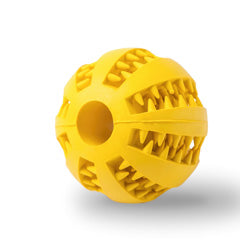Spaying and neutering, much like crate training, remains a controversial subject. Despite nearly 80% of dogs undergoing these procedures and the mandate in at least 31 states for shelters to spay and neuter before adoption, lingering questions and concerns persist. Delving into both sides reveals a lack of definitive consensus. Undoubtedly, the primary rationale—that it aids in controlling the pet population—holds significant sway. However, it's crucial to consider the nuances of both arguments. Should one opt for spaying and neutering their dog? Let's delve deeper into the topic to make an informed decision. Let's explore what spaying and neutering entail, along with their respective pros and cons.
Spaying is the removal of the ovaries and usually the uterus of a female animal. While it is more involved than a neutering procedure, the operation still typically takes less than 90 minutes to complete. And, while some vets will keep your dog overnight, most pets are fine to head home the same day to rest and heal. She'll need to avoid running, jumping, playing rough, and taking baths or swimming for two to four weeks while she recovers.
Neutering (also known as castration) is the common term used to describe the surgical procedure during which both testicles are removed in order to sterilize (make infertile) a male dog, therefore stopping its ability to reproduce. The whole medical process is typically quick and you are usually able to take your dog home that same day to rest. Recovery typically takes just a few days, but you'll need to limit activity (such as running, jumping, climbing and swimming) for about two weeks so everything heals properly.
Let's look at the advantages and disadvantages of spaying and neutering.
Advantages-
- Population control- population control is by far the most common reason for altering your pet. It’s estimated that 1.2 million puppies are born each day, compared to 360,000 babies. That works out as three times as many puppies as babies!
- No unwanted pregnancy/birth- While Many dogs are able to give birth to their pups with minimal to no outside help, complications during whelping do occur. A difficult or abnormal birth is referred to as dystocia, and is a common problem in veterinary medicine. Pregnancy can also be very difficult on the mommy dog. As she is having to provide nutrients to her unborn pups.
- Health benefits- The clearest link is between sex-hormone exposure and the development of mammary tumors. A dog spayed prior to the first heat has a risk of only 0.5%. This risk increases to 8% if spayed after the first estrus, then 26% after the second. Other cancers of the reproductive tract can be reduced significantly by spaying and neutering. Removing the gonad eliminates the risk of uterine, ovarian, and testicular tumors.
- Behavioral Benefits- Once a dog has been neutered/spayed they typically do not wonder as much and typically have less aggression. This is due to the decrease in hormones that can contribute to aggressive behavior — namely, testosterone in male dogs and estrogen in female dogs.
- Longer lifespan-A study conducted by Banfield Pet Hospitals on a database of 2.2 million dogs and 460,000 cats concluded that neutered male dogs lived 18% longer and spayed female dogs lived 23% longer. Spayed female cats in the study lived 39% longer and neutered male cats lived 62% longer.
Disadvantages-
- Surgical risk- While spaying and neutering are considered major operations and require general anesthesia, anytime anesthesia is involved the risk of serious complications, including death, is always present. However, with modern anesthetics and monitoring equipment, the risk of a complication is very low.
- Potential for weight gain- Spaying and neutering alters your pets hormonal balance, which can lead to their metabolism slowing down. Just like humans, as one's metabolism slows down you must continue to stay active and have a healthy diet.
- Impact on growth and development- Research shows that spaying and neutering can increase the risk of joint disorders, such as hip dysplasia and possible urinary incontinence. The impact it will take on the dog depends on the breed. Studies show that Golden retrievers, Labrador retrievers, and German shepherds have an increased incidence of 1 or more joint disorders in dogs neutered before 1 year of age.
- Increase in specific cancers - Certain breeds that were spayed and neutered had a correlation of being three to four times more likely to develop certain cancers. However, Intact dogs have noticeably less risk of developing lymphoma, one of the most common cancers in dogs. A large, multi-institutional retrospective study using the Veterinary Medical Database compared about 15,000 canine lymphoma patients with 1.2 million dogs from the general population. Intact female dogs had about half the likelihood of spayed females, intact males, or neutered males.
- Loss of reproductive ability- This is an obvious one, once a dog has been spayed/neutered they will no longer be able to produce offspring.
- Cost- While the cost of spaying/neutering your furry friend varies depending on location and the overall health of your dog it is normally between $200-$500 if done at a veterinarian's clinic or a private facility. However, if you are adopting a dog from a shelter it is normally included in your adoption fee. Also, there are often state voucher/ assistance programs, low-cost clinics and non-profit veterinary clinics that will offer spaying and neutering at a lower rate, if not for free.
So, should you spay and neuter your dog? Unfortunately, I can't provide a clear-cut answer. Personally, I advocate for spaying and neutering to help control the pet population, considering the staggering number of animals euthanized annually due to space limitations. Almost one million cats and dogs are euthanized per year!
While I've extensively researched both sides of the argument online, finding comprehensive documentation with universally applicable recommendations proves challenging. There's no one-size-fits-all solution; the decision to spay/neuter hinges on variables like breed, age, and gender. Just as with humans, every dog is unique.
I trust that you've gained insight into the pros and cons of spaying and neutering, enabling you to make an informed decision. As always, I strongly urge you to have an in-depth conversation with your veterinarian to assess the suitability of spaying or neutering for your pet. Their guidance will be invaluable in making the best choice for your furry companion.
Sources:
Robins, Mary. (updated) 2020, September 17th. American Kennel Club Should You Always Spay-Neuter Your Dog?
Campbell,Wesley DVM, MS | Mar 14, 2023 | Blog Post, Oncology, Wesley Campbell, DVM, MS, The Relationship Between Spaying/Neutering and Cancer
https://www.earthandanimals.com/companions/dogs/overpopulation-crisis/
https://www.yappy.com/us/blog/17-fun-facts-about-puppies-for-national-puppy-day#:~:text=1.2%20million%20puppies%20are%20born%20every%20day&text=It's%20estimated%20that%201.2%20million,as%20many%20puppies%20as%20babies!













